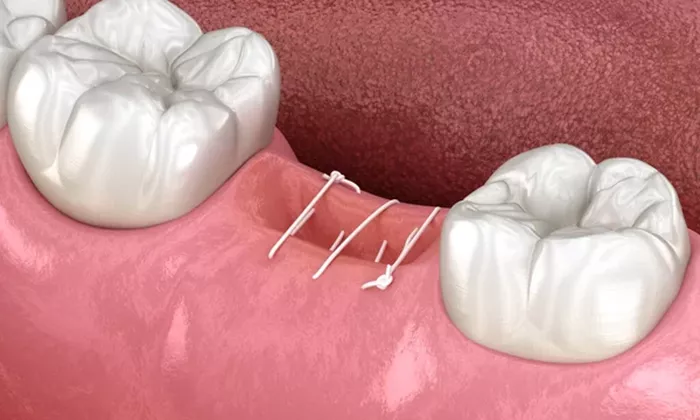Wisdom teeth removal is a common dental procedure. After the extraction, stitches are often placed to help the gums heal properly. These stitches keep the wound closed, reduce bleeding, and protect the area from infection. Many patients wonder, does taking out stitches hurt wisdom teeth surgery? This article explains the process in detail and provides a clear understanding of what to expect.
Why Are Stitches Used After Wisdom Teeth Extraction?
Purpose of Stitches in Dental Surgery
After removing wisdom teeth, especially impacted or surgically extracted ones, the gums need to be closed carefully to promote healing. Stitches help by:
- Keeping the gum tissue in place
- Protecting the extraction site from food and bacteria
- Reducing bleeding and swelling
- Facilitating faster healing
Types of Stitches Used
Dentists and oral surgeons use two main types of stitches:
Resorbable (dissolvable) stitches: These dissolve on their own within days to weeks and do not require removal.
Non-resorbable stitches: These need to be removed by a dental professional after the healing period, usually 7-10 days post-surgery.
What to Expect When Taking Out Stitches After Wisdom Teeth Removal
The Timing of Stitch Removal
Typically, stitches are removed about one week after wisdom teeth extraction. This timing depends on how fast the gum tissue heals and the type of stitches used. Your dentist will schedule an appointment to examine the site and decide if it is safe to remove the stitches.
Does Taking Out Stitches Hurt?
Most patients experience minimal to no pain when stitches are removed. The process is quick and usually involves gently pulling the stitches with special dental instruments. Because the gums have started healing, the tissue is less sensitive at this stage.
Some may feel mild discomfort or pressure, but it rarely causes significant pain. If you experience sharp or intense pain, inform your dentist immediately.
Factors Affecting Pain During Stitch Removal
Type of stitches: Non-resorbable stitches may cause slight discomfort when pulled out, but dissolvable ones do not require removal.
Healing status: Well-healed gums reduce discomfort, while inflamed or infected tissue may be more sensitive.
Patient sensitivity: Everyone’s pain threshold differs, so individual experiences vary.
How to Prepare for Stitch Removal
Before the Appointment
Maintain good oral hygiene as advised by your dentist. Avoid disturbing the stitches or extraction site. Eating soft foods and avoiding smoking can promote healing and reduce irritation.
During the Appointment
The dentist will inspect the extraction site carefully. If healing is adequate, they will proceed with stitch removal. The area may be cleaned gently afterward, and your dentist might provide instructions for further care.
Post-Stitch Removal Care After Wisdom Teeth Surgery
Managing Discomfort After Removal
Some mild soreness or tenderness after stitch removal is normal. Over-the-counter pain medication such as ibuprofen can help relieve any discomfort.
Oral Hygiene Practices
Continue to keep the area clean by gently rinsing with warm saltwater several times a day. Avoid vigorous rinsing or brushing directly over the site until it fully heals.
Recognizing Signs of Complications
Contact your dentist if you experience:
- Severe pain that does not improve with medication
- Swelling or redness that worsens
- Bleeding that does not stop
- Foul taste or discharge indicating infection
Common Questions About Wisdom Teeth Stitches
Can I Remove the Stitches Myself?
No. Removing stitches should always be done by a dental professional. Improper removal can cause damage, infection, or delayed healing.
What Happens If Stitches Are Left Too Long?
Leaving non-resorbable stitches too long can cause irritation, inflammation, or infection. Your dentist will advise the right time for removal to avoid complications.
Is Stitch Removal Necessary for Dissolvable Stitches?
No. Dissolvable stitches are designed to break down on their own and do not require removal. They usually disappear within 1-2 weeks.
Related Dental Procedures and Considerations
Connection to Tooth Extractions
Stitches are commonly used not only for wisdom teeth but also for other tooth extractions, especially surgical ones. The purpose remains to support proper healing and prevent complications.
Root Canal Treatment and Wisdom Teeth
In rare cases, a wisdom tooth might require root canal treatment instead of extraction if the tooth can be saved. However, this is uncommon due to the difficulty of cleaning and the common issues with impacted wisdom teeth.
Role of Follow-Up Care
Follow-up visits after wisdom teeth removal, including stitch removal, are crucial for monitoring healing, managing pain, and preventing infections. Always follow your dentist’s instructions and attend scheduled appointments.
Conclusion
In summary, does taking out stitches hurt wisdom teeth surgery? The answer is generally no or only mild discomfort. The process is brief and necessary to ensure proper healing after wisdom tooth extraction. Following your dentist’s guidance before and after stitch removal helps minimize pain and prevent complications. If any unexpected pain or symptoms occur, consult your dental professional immediately. Wisdom teeth surgery and its aftercare, including stitch management, are manageable steps toward better oral health.

